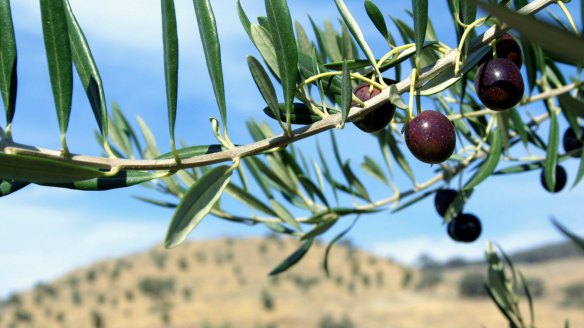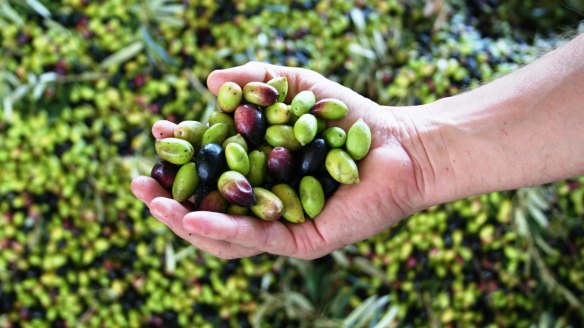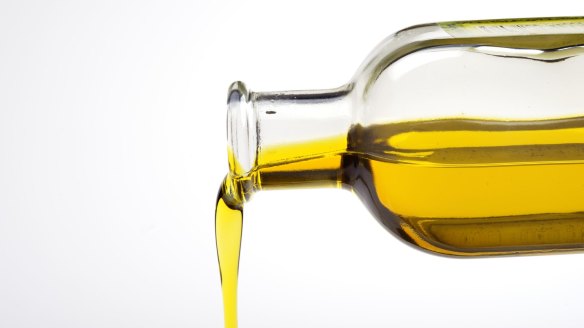Oils ain't oils: Busting the seven biggest myths around olive oil

After a bumper olive crop in many parts of the nation, the 2021 vintage of Australian extra virgin olive oils isnow hitting the shelves.
Olives grow over summer, ripen in autumn, and are harvested from April to June each year, where they're transformed into an oil using a simple process. Once harvested, the olives are taken to a mill where the fruit is crushed into a pulp, and the oil is separated from the skin, flesh and seed. The oil is stored for several weeks for any moisture or particles to settle, tested and tasted to ensure it meets quality standards, then bottled or tinned.
That is what extra virgin olive oil is – 100 per cent untreated, unheated olive juice. Australian growers produce about 20,000 tonnes of oil a year, a drop in the ocean compared to the 3.1 million tonnes produced globally. A lot of marketing and hype goes with the global olive oil business, which has led to a lot of myths. We asked Leandro Ravetti, chief oil maker at Cobram Estate, Australia's largest producer and marketer of premium quality extra virgin olive oil, to help debunk some of the misunderstandings around olive oil.

Myth 1: Light olive oil is lower in calories
Fact: All grades of olive oil have the same calorific value. "Light" refers to the flavour. "Light olive oil" is generally made with lower grade refined olive oil, to which some more flavoursome oil is added. It may also be labelled "pure" olive oil or simply olive oil. A light-style extra virgin olive oil, on the other hand, means it has a mild flavour.
Myth 2: You can't use extra virgin olive oil for cooking
Fact: "Tell that to my Italian grandmother," says Ravetti. "She cooked everything in extra virgin olive oil. It is stable under heat and as good for roasting potatoes, starting the braise for a slow-cooked dish, shallow-frying fritters as it is for dressing a salad or finishing a soup." However, some extra virgin olive oils are too expensive or too intensely flavoured to use for frying and are best used to finish a dish, say, as a drizzle over a rib-eye steak.
Myth 3: Cloudy olive oil has gone rancid
Fact: Rancidity comes from exposure to air and light but does not cause cloudiness. New-season extra virgin olive oil that is cloudy may have some suspended water droplets causing cloudiness. Extra virgin olive oil will also become cloudy in cold conditions (such as when you put an oil-based dressing in the fridge) but will return to its deep gold/green state when returned to room temperature.

Myth 4: Extra virgin olive oil has no expiry date
Fact: Extra virgin olive oil will naturally degrade over time, especially when subjected to light and air. Larger producers use dark green bottles and replace the oxygen inside the packaging with nitrogen to protect the oil from light and air. Look for the harvest date on the label. If unopened, the oil will be good for 12 months after that date. Keep opened oils in the pantry, properly sealed, and use within four to six weeks of opening.
Myth 5: Heating olive oil leads to the formation of trans fats
Fact: You need some impressive industrial machinery to make trans fats. Heating olive oil does not create trans fats.
Myth 6: Olive oil always tastes smooth
Fact: Extra virgin olive oil can feel buttery in the front of the mouth but will have a "catch" at the back of the throat. These bitter flavours are the biophenols, antioxidants that are beneficial to health.
Myth 7: Imported extra virgin olive oils are better than Australian oils
Fact: Some outstanding oils are produced overseas, and if the packaging is nitrogen-flushed and kept refrigerated during transportation, they are truly wonderful. But many imported oils are not as fresh as local oils and not as well produced. Almost all Australian olive oil is extra virgin (in other words, produced from the first pressing of the olives) using state-of-the-art technology and methods.

How to taste olive oil
You'd be amazed by the range of aromas and flavours you find when tasting extra virgin olive oils. "Good extra virgin olive oil should remind you of something fresh, like tomatoes, tropical fruit, apples, freshly mown grass," says Leandro Ravetti from Cobram Estate. "It should have a rich but clean mouthfeel. If it tastes like cheese or any fermented food, then the fruit has not been handled properly."
To taste like a pro, pour a little olive oil into a small glass and follow the four Ss: swirl, sniff, slurp and swallow. (Professional tasters use a special blue-tinted glass to disguise the oil's colour so their preconceptions don't influence their judgement.)
Make a seal over the top of the glass with the palm of one hand and rub the base of the glass with the palm of your other hand for 30 seconds. This warms the glass and releases the oil's aromas. Swirl the glass, then lift it to your nose and sniff the aromas, then slurp a little oil through your lips, as if you were tasting wine. This lets some air through the oil so the aroma wafts into your nasal cavity, releasing more flavour. Unlike wine tasting, you'll need to swallow a little oil to feel the "catch" down the throat.
You can take part in an online tasting with Cobram Estate on October 28, part of an attempt to set a record for the world's largest virtual olive oil tasting. Participants will receive four extra virgin olive oils, a sample of rancid oil as a benchmark, plus tasting cups. The tasting is normally $10, but use the code GOODFOOD for 50 per cent discount. Enrol at cobramestate.com.au .
